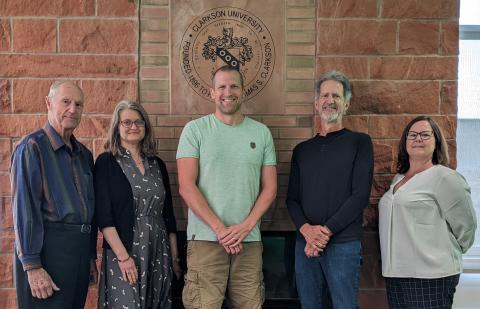Per- and polyfluoroalkyl substances (PFASs) are synthetic organofluorine chemical compounds that have multiple fluorine atoms attached to an alkyl chain. Many PFASs were used in the mid-20th century in products and on materials due to their enhanced water-resistant properties, such as within Teflon or aqueous film forming foam.
While they have been poisoning people and the planet for some 70 years, powerful corporations (such as Dupont, the original member of the military-industrial complex in America) have pressured governments to hide the dangers from the public.
Back in the 70s, when health and environmental groups first started cautioning people about PFAS toxicity in Teflon cookware, the chemical industry launched a major campaign in the mass media that labelled such concerns as the unfounded paranoia of “health nuts”.
In recent years, thanks in part to the feature film Dark Waters, starring Mark Ruffalo, the public has finally started to wake to the danger.
Far too late, of course: every living being on the planet now contains PFAS. Residues have been detected in humans and wildlife worldwide, prompting concern about impacts to health.
Only since the start of the 21st century has the environmental impact and toxicity to human and mammalian life been studied in depth. PFOS, PFOA and other PFASs are commonly described as persistent organic pollutants or “forever chemicals” because they remain in the environment for long periods of time.
According to the National Academies of Sciences, Engineering, and Medicine, PFAS exposure is linked to increased risk of dyslipidemia (abnormally high cholesterol), suboptimal antibody response, reduced infant and fetal growth, and higher rates of kidney cancer.
Health concerns related to PFASs have resulted in numerous litigations. In 2021, Maine became the first U.S. state to ban these compounds in all products by 2030, except for instances deemed “currently unavoidable”.
Now, on June 8. 2023 in Potsdam, New York, a group of Clarkson University professors, led by Kodak CAMP Distinguished Professor of Chemistry and Biomolecular Science Mario Wriedt, has been awarded $654,217 from the Department of Defense’s (DoD) Strategic Environmental Research and Development Program (SERDP) to find and design new advanced adsorbent materials to remove toxic per- and polyfluoroalkyl substances (PFAS) from groundwater.
The team includes Dean of the Graduate School Michelle Crimi, who initiated the project and led the proposal preparation, Egon Matijevic Endowed Chair of Chemistry & Biomolecular Science Silvana Andreescu, Jean S. Newell Distinguished Professor of Engineering Thomas Holsen, Adjunct Research Professor Richard Partch, all as Co-Principal Investigators.
The group also includes University of Nebraska Associate Professor Nirupam Aich and University of Central Florida Assistant Professor Anwar Sadmani.
Wriedt and Partch will be studying how to use metal-organic frameworks (MOFs) to remove PFAS more quickly and efficiently from groundwater.
Metal-organic frameworks (MOFs) are a class of highly porous materials that are structured similarly to a jungle gym, where the nodes represent metal clusters, the struts are organic ligands, and the pores of the framework are accessible for guest molecules.
Wriedt said MOFs are highly tunable and can be tailor made to handle PFAS removal, which makes them an attractive prospect for mitigating PFAS. Led by Andreescu and Aich, the group will also explore using lanthanide-based and reduced graphene oxide-supported nanoscale zero valent iron-based media, respectively.
“We are thankful for the support of Clarkson’s Center for Air and Aquatic Resources Engineering (CAARES),” Wriedt pointed out.
Led by Holsen, CAARES is currently DoD ELAP accredited for PFAS analysis and therefore playing a critical role for the project.
The project award comes at a time where the Environmental Protection Agency (EPA) is tightening its regulations on PFAS limits.
“Our materials need to meet those EPA requirements. We need to be better than those guidelines,” said Dean Crimi, an established PFAS expert.
Wriedt said the Clarkson group’s research is only one such project underway, as the Department of Defense casts a wide net in search for the best remediation strategy for PFAS. The goal, he said, is to identify the process by which both capacity and speed of removal are optimized.
Photo (courtesy of Clarkson University) shows Richard Partch, Silvana Andreescu, Mario Wriedt, Thomas Holsen, and Michelle Crimi.

